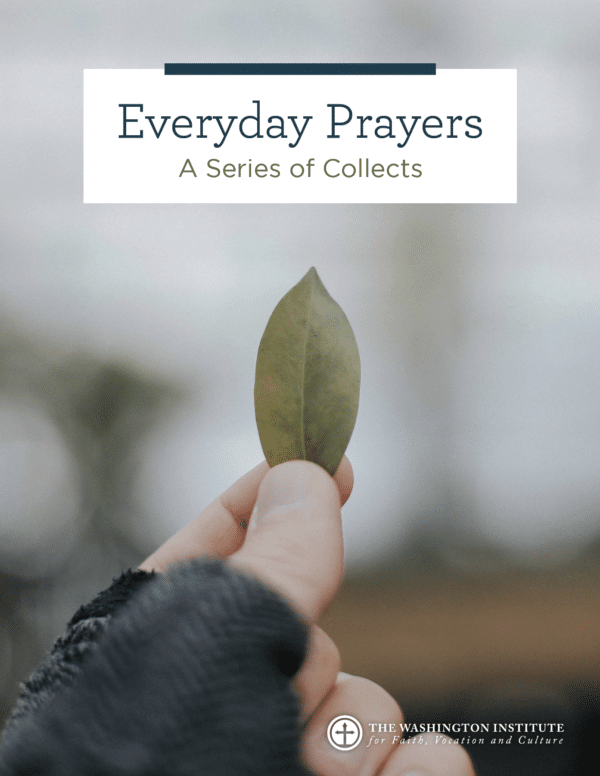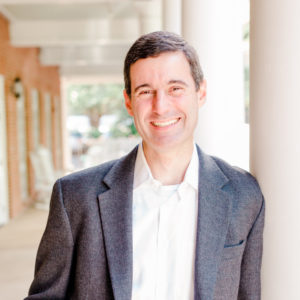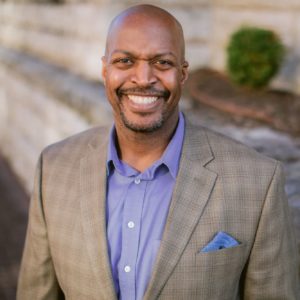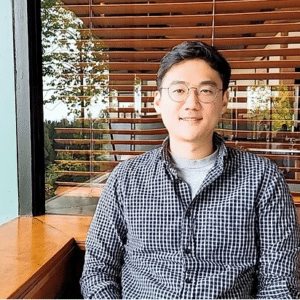FIRE, standing for “Financial Independence, Retire Early,” has risen in popularity, especially among younger adults. The idea is that achieving financial independence quickly leads to a happier life, as it enables us to spend the rest of our life not needing to work. I get it. I remember one day when my wife Esther and I were driving to downtown Vancouver for our work together at 8 a.m. on a Monday, with traffic on Highway 1 ahead of us, feeling tired and disgruntled. We found ourselves complaining about our jobs: “Why do we need to work?” and wondering when the day would come that we wouldn’t need to work.
The underlying premise of FIRE is that work serves only as a means to earn money. While viewing work as a path to financial stability may not be a bad idea, it does, however, overlook the deeper and more complete purpose of vocation as it was meant to be.
In an essay “The Two Economies,”[1] Wendell Berry dives into the problems of the industrial economy by noting its tendency to disconnect and disintegrate itself from the rest of the world. He argues that even though its existence is very much dependent on its surroundings—people, places, and the planet—it refuses to see and operate comprehensively and holistically and destroys what it does not comprehend.
Often, living and working in the world of industrial economy, we do not see our work as something that is connected to our communities and world. For instance, in “These are the Most Fulfilling Jobs in America,” published by The Washington Post, Andrew Van Dam reveals a survey about how people view their community contribution through work. The survey asked workers across different occupations if they agreed with the statement “I contribute to the community through my work.” The highest agreement was at 54% for workers in the social service industry, while all other industries—including management, healthcare, legal, arts, production, administrative support, and others—scored below 49%, with the vast majority in the range of 20%–30%, highlighting a significant disconnect between people’s view of work and its connection to the community.
As an attempt to move the world in the right direction, Berry introduces two economies: the lesser and the greater. The lesser economy represents the world as it currently operates, while the greater economy embodies the underlying reality—seen or unseen—by which the lesser economy should operate and abide. The greater economy is the Kingdom of God, where economics is placed rightly in relation to people, places, and the planet.
This is the world of creation, the world that God intended, where our vocations were meant to be more than FIRE, deeply rooted and connected to the people and places of communities in the world, working towards mutual flourishing of worker and world, filling the world with the goodness and glory of the Lord. What does this world of creation show us about what our vocation was truly meant to be? Where might it give us something more than FIRE as a reason for our labor and work?
First of all, in the world of creation, as described in Genesis 1–2, our vocation was meant to be a work of co-creation with God by filling, forming, and blessing the world. In the creation account, we see how everything began: “The earth was without form and void, and darkness was over the face of the deep” (Genesis 1:2). In the world without forms and structures, void and empty, we see our sovereign Lord actively building and bringing out the forms and structures and filling the void with habitats and inhabitants. Through this work, our Lord brings cosmic order to our universe and creates our world to be a place of cosmic coherence, a place of stability, beauty, and prosperity, where the whole creation joyfully flourishes under his rule and care. Against any idea that says creation is evil, something void of meaning, something from which to be liberated, the Lord calls his work of creation not just “good,” but “very good.”
Although the word “covenant” does not appear in Genesis 1–2, this is how our world was created to be, the covenantal cosmos. This is the world, as Steven Garber says, that is defined by revelation, relationship, and responsibility.[2] In creation, God gloriously displays his power and wisdom in all realms of this world. Within this world, the Lord makes humanity in his image and likeness, revealing to us who he is and what he is like. He invites us into a relationship of love—the life of covenant—to walk with him. In this covenantal cosmos embedded with revelation, relationship, and responsibility, the Lord blesses and calls humanity to vocational stewardship, making us vice-regents of the world. Our call is to care for the world and steward it by filling its empty places, and subdue it—that is, to form both culture and civilization—in a way that applies reflects the wisdom of God.
Genesis 1:27–28 describes our call to vocational stewardship. The text is beautifully constructed with Hebrew wordplay that sounds harmonious when read aloud:
…In the image of God he created [bara] them… blessed [barak] them and said to them, “Be fruitful [peru] and increase [urebu] in number; fill [ū·mil·’ū] the earth and subdue it. Rule [ū·rə·ḏū] over…”
Here, the author of Genesis seems to intentionally build Hebrew words that sound harmonious to the ears of the hearers—bara, barak, peru, urebu, ū·mil·’ū, and ū·rə·ḏū—to indicate that our responsibility as vocational stewards was fundamentally designed to be a beautiful and harmonious endeavor. God created us in his image and blessed us for the task of co-creating with him: filling and forming so that the world may be full of the glorious grace of our Lord. This was and is the beautiful and harmonious design of our vocation.
October last year, Esther and I got away for a short break to Getaway Cabins in the Mount Vernon, Washington area. In our tiny cabin surrounded by woods, we enjoyed and marveled at the beauty of creation. In the evening, as Esther prepared supper in the cabin’s tiny kitchen, my eyes caught a book hidden in the tiny bookshelf, called The Hidden Life of Trees by Peter Wohlleben. I started reading and found one of the most amazing hidden truths of the trees: Wohlleben writes:
A tree is not a forest. On its own, a tree cannot establish a consistent local climate. It is at the mercy of wind and weather. But together, many trees create an ecosystem that moderates extremes of heat and cold, stores a great deal of water, and generates a great deal of humidity. And in this protected environment, trees can live to be very old. To get to this point, the community must remain intact no matter what. If every tree were looking out only for itself, then quite a few of them would never reach old age. Regular fatalities would result in many large gaps in the tree canopy, which would make it easier for storms to get inside the forest and uproot more trees. The heat of summer would reach the forest floor and dry it out. Every tree would suffer. Every tree, therefore, is valuable to the community and worth keeping around for as long as possible. And that is why even sick individuals are supported and nourished until they recover.[3]
Reading this page and seeing the trees again, I became intrigued by the way trees support and sustain each other. Even the weak and dying ones are cared for, creating stronger ecosystems and environments that protect, preserve, and even restore lives. The next day, feeling rested and restored by the ecosystem of trees, we drove back to Vancouver, our home. On the way, we stopped by a coffee shop appropriately called Woods Coffee in Bellingham, Washington. Once again surrounded by the trees, I reflected on the economics of trees, the “woods economics”—how together they build a stronger and healthier habitat where flourishing is possible.
Driving home, I kept asking the question: How can the “woods economics”—the economics that seeks the flourishing of people, places, and the planet by building stronger ecosystems and economies—be more real and more true in our lives and vocations?
As part of my finance work, I am part of the development consultant team that has helped one housing society in our city whose building for seniors needed repairs, but was unsure how to move forward with the retrofit project to improve the building’s longevity and energy efficiency. The consultants helped the housing society navigate the legal, operational, and financial challenges by conducting engineering and energy studies, procuring construction contractors, and persuading the bank and government to lend by showing them—based on financial modeling—that the project would be not only profitable but also purposeful. It would contribute to the flourishing of the planet by improving the energy efficiency of the building, and places by building a stronger and more resilient community for the people.
I asked a friend who led this project what made him engage in the project. He said, “I just can’t help but feel called to do it.” He spoke of his faith that helped him see his work as part of a bigger reality, a greater, covenantal, “woods” economy, that contributes to the blessing of the world by building and forming healthier and stronger communities.
Secondly, in the world of creation, our vocation was meant to be a work of priestly care and service for the world. In Genesis 2:15, where it says, “The LORD God took the man and put him in the garden of Eden to work it and keep it,” the Hebrew words for “work” and “keep” are “avodah” and “shamar,” respectively. Amazingly, these exact same Hebrew words appear in Numbers 3:7–8 to describe the work of priests in the temple. In Seriously Dangerous Religion, Iain Provan, drawing a connection between the creation story and temple construction process in the Old Testament, shows that the entire universe was designed to be a temple, a sacred place of worship of our Lord. He says:
It is this close connection between cosmos construction and temple construction that we see also in Genesis 1:1-2:4, where the cosmos is presented as God’s temple. First, temple-dedication ceremonies in the ancient Near East often lasted seven days; in Genesis 1…we are told that the creative process lasts six days, but the six are completed by a seventh in which God comes to “rest.” Near the beginning of the creative process, second, we are told of God’s gathering of the waters into one place so that they could serve a useful purpose as seas (Genesis 1:9). This reflects the reality of the later temple in Israel’s capital city of Jerusalem, within whose precincts was to be found an impressive “sea of cast metal, circular in shape” (1 Kings 7:23-26). Third, we also read in Genesis about the creation of the sun and the moon (Genesis 1:14-16)…we should note that the Hebrew word used here for “light” (ma’or) is most frequently used elsewhere in the Old Testament for the sanctuary light in the tabernacle…Fourth, the end of the creation account in Genesis 1:1-2:4 also reminds us the construction of the tabernacle. In Exodus 40:33, Moses “finished the work” on that sanctuary, just as God “finished his work” on creation in Genesis 2:2. Finally, before God finishes his creative work, we read in Genesis that he places an “image” in creation (1:26-28). In the ancient Near East more generally, a deity’s presence in his temple was also marked by an image, in which the reality of the deity was thought to be embodied.[4]
Within this world, the covenantal-temple cosmos, our vocation—gardening, for Adam—was meant to be a priestly service, caring for and serving God’s creation, the temple-cosmos, permeating and mediating the presence of God through the work of our hands. Provan notes, “From the biblical perspective, the work of human beings in God’s world is religious work. We are called to look after the sacred space—the dwelling place of God—on behalf of the one who created it”[5]
In April 2024, Esther and I had a chance to visit Oahu Island in Hawaii. There, we were able again to marvel at the beauty of God’s creation. One morning we visited a Honolulu Coffee Experience Center for breakfast. As we entered the store, Esther said, “Paul, I heard the coffee here is amazing,” but I was thinking, “Aren’t all coffees the same?” As Esther went to order food, I started reading the story of Kona Coffee on the walls. First, the coffee shop’s motto caught my eye: “We are the world’s premier farm-to-cup coffee company.” Becoming interested, I read on and found out that Honolulu Coffee deeply cares about the quality of the coffee they bring to their customers. For this reason, they actually own and operate the coffee farms to ensure every process from seeding and planting to cultivating is done under their good care.
Intrigued, I began reading more about their coffee farm and discovered that Kona coffee farm is located along the western slopes of the Mauna Loa area on the island, where their plants grow in a unique tropical environment and volcanic soil, giving the coffee one of the rarest tastes on earth. Then, Esther brought the coffees and açaí bowls. While she was taking the photos, I took the first sip of the coffee to be amazed by its flavor. It was fresh, smooth, delicate, well-balanced, and somewhat nutty—a unique taste that lingered in my mouth for a few seconds even after a sip. Then, I tasted the açaí bowls, a flavor which I’ve found nowhere else in North America. The coffee, fruits, and honey, all unique to the island’s tropical environment and cultivated by caring human hands, came together to create a delicious and healthy, one-of-a-kind meal. These were not just another coffee and another açaí bowl.
I began to wonder whether this is what our vocational stewardship is meant to be in the world of creation. The staff at Honolulu Coffee shop, by carefully cultivating, curating, and caring for the land—the soil of creation—were bringing out the truest taste of coffee, the taste which was meant to be tasted in the world of creation, and serving customers with joy and delight. In their vocation of coffee-making and serving, I saw the reflection of creation care, the priestly service, the work of common grace, caring for the temple-covenantal cosmos and creating the common good of coffee for the flourishing of people and places of the world.
Lastly, in the world of creation, our vocation was meant to be an act of worship that joins the creational choir filling the temple-covenantal cosmos with the glory of the Lord. In creation, which is designed to be a sanctuary—a place of worship for the Lord—we saw that we were given a priestly calling to work [avodah] and keep [shamar] the world. Moreover, reading Genesis 1–2 carefully, there are many repeated words and phrases and Hebrew wordplays. Based on these literary devices, in the sermon, “The Song of Creation,”[6] Tim Keller says the creation account was probably written as a song that is to be sung out, narrating the whole purpose of creation: to sing to the praises of the glorious grace of our Lord, as the psalmist says, “The heavens declare the glory of God; the sky above proclaims his handiwork.”
The Hebrew word for work, “avodah,” is also used in the Old Testament as worship for the Lord. This is the word that miraculously and mysteriously interweaves and intertwines the seemingly disparate ideas of worship and work into the seamless tapestry of life to be unfolded in our vocations. Within this world, when our avodah is expressed as worship, we join the creational choir, working together in harmonious endeavors that fill the whole world with the praises of the glorious grace of our Lord.
In the fall of 2023, while visiting Barcelona, Spain, Esther and I had a chance to visit Montserrat Abbey, home to the Order of Saint Benedict. The monastery, with its stunning architecture, perches atop a mountain, surrounded by the remarkable natural beauty overlooking the region of Catalonia. I always find myself drawn to the Benedictine community’s motto, “ora et labora,” meaning “pray and work,” which is built into the Benedictine monastic daily rhythms of work and worship, worship and work, liturgy and labors, labors and liturgy interwoven into the very fabric of their lives.
There, we got to hear one of the most beautiful voices of the boys’ choir at the abbey. In the sanctuary of the abbey, after a profound moment of deep silence, the choir began to sing. Their seamless, sacramental voices filled the air with beautiful harmonies, enveloping the entire sanctuary. I began to imagine whether this is what the life of avodah, “ora et labora,” is meant to be—a life where worship and work, work and worship, liturgy and labor, labor and liturgy are deeply and beautifully interwoven and intertwined into coherence, expressed through a joyful harmony of vocations, filling the sanctuary of the whole world to the praises of the glorious grace of the Lord.
That afternoon, Esther and I took the funicular and came to the very top of the mountain, where the abbey is located. As I looked out, gazing at the world below, I wondered: Could the life of Benedictine monks that brings the life of worship and work together be lived not only within the walls of the abbey’s sanctuary, but in the sanctuary of the whole world which God has created to be the temple-covenantal cosmos, filling the world with praises of glorious grace of our Lord?
Romans 14:17 tells us that “The kingdom of God is not a matter of eating and drinking, but of righteousness, peace and joy in the Holy Spirit.” Where and when do you find the kingdom of God manifested in your life? I truly feel the joy of the Lord when I get to see the work that I do as a financial specialist reflecting the work of creation—forming and building financial systems and structures, filling and populating them with numbers to build models that enable projects that become a priestly service for the temple-covenantal cosmos, as these models work towards building cities and communities that fill the world with blessings and graces of the Lord.
On our last day in Hawaii, Esther and I stood on Waikiki Beach gazing at the sunset. In that sacramental moment of beauty, the light of the sun was right in the middle, between heaven and earth, holding and bringing the world of heaven and earth together, and filling the whole world with beauty that could not possibly be described in words. At that moment, while heaven and earth met, a true moment of ora et labora, marveling at the beauty of God’s creation, we longed and prayed for the vocations of our lives to be exactly that—works of common grace, that reflect the true light that fills the whole world with beauty and praises of glorious grace of our Lord, seamlessly bringing heavenly worship and earthly works together, as it was all meant to be since the first day of our universe when our Lord said “let there be light.”
In the creation story, we see that our vocation is more than a FIRE. Through our vocation we get to co-work with God in filling, forming, and blessing the world. Our vocation is also a priestly care and service of the temple-covenantal cosmos, as it becomes an act of worship that joins the creational choir filling the world with praises of the glorious grace of the Lord.
[1] Berry, Wendell. Wendell Berry – Two Economies, www.worldwisdom.com/public/viewpdf/default.aspx?article-title=Two_Economies_by_Wendell_Berry.pdf. Accessed 21 Aug. 2024.
[2] Garber, Steven. Visions of Vocation: Common Grace for the Common Good. IVP Books, an Imprint of InterVarsity Press, 2014, 92-93.
[3] Wohlleben, Peter. Hidden Life of Trees: What They Feel, How They Communicate – Discoveries from a Secret World. HarperCollins Publishers, 2020, 4.
[4] Provan, Iain W. Seriously Dangerous Religion: What the Old Testament Really Says and Why It Matters. Baylor University Press, 2014, 33.
[5] Ibid., 37.
[6] Keller, Tim. “The Song of Creation.” Redeemer Presbyterian Church, www.youtube.com/watch?v=ClRGMCnimgo&list=PLu13Nx47WSVoHk5xdC88PREjGX5DbtXds. Accessed 6 Dec. 2024.






